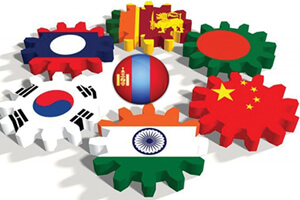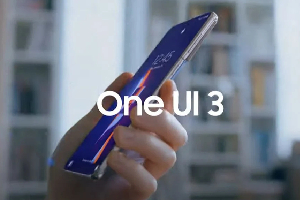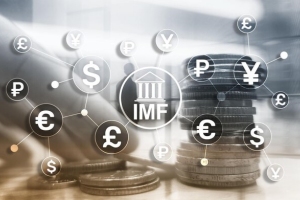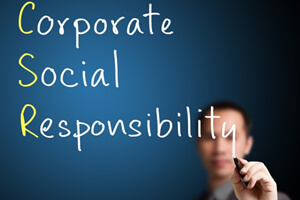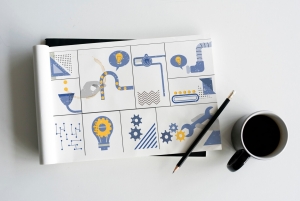Why Sơn Mài Painting Is So Expensive
Narrator: Sơn mài is a traditional Vietnamese form of lacquer painting created using a toxic lacquer harvested from one region of the country. It requires months of application and sanding back layers of paint to build up the image. Last year, a sơn mài painting sold at auction for $972,000. So, what makes these paintings so special? And why are they so expensive?
Phạm Chính Trung: You never truly know what’s underneath a lacquer painting as you are completing it. And so, the process involves the artists sanding the work into shape, slowly revealing the colors, giving the artist a sense of anticipation as he is crossing the finishing line, and artists love that feeling.
Narrator: Phạm Chính Trung has dedicated almost 50 years to mastering sơn mài and knows how equally tiring and rewarding the craft can be. It is an art form of incredible value in Vietnamese culture, for both the time and skill it requires and the exclusive natural materials needed to make it. The process of making lacquer paint begins in the forests of Vietnam, where planters collect resin from a toxic wax tree native to Southeast Asia called the Rhus succedanea. Planters must cut into more than 400 trees to retrieve between 1 and 1.5 kilograms of resin.
Tai Thi Thu Huong: The rhus tree is harvested after three years of planting, after which it can be harvested for four to five years. To get the sap, we’ll have to start at 4 a.m. Making incisions in the bark, using mussel shells to catch the resin. We collect that resin after three to four hours.
Narrator: After harvesting, the lacquer must be removed of any impurities and mixed for several hours before it’s suitable for painting. One of the principal features of sơn mài is the depth created by adding several layers of paint and sanding them back. These layers aren’t always visible in the finished work, but are what differentiate lacquer painting from other common painting styles. With oil painting, artists paint from back to front, painting the landscape first and the details later. The process of lacquer painting is the opposite.
Phạm Chính Trung: The two styles are a bit different. Because the sketch and the details are painted over, they can’t be seen once the painting is finished but will eventually reappear when it’s sanded down. It’s never-wracking for that reason. It’s hard to mess up the picture, but you have to see if you have used the right material. Are the colors in the right shades? Right? Are they intense enough? Your technique shows in those contrasting features. Without it, the painting becomes homogeneous, almost like an oil painting.
Narrator: Artists mix natural ingredients to create colors, like eggshells to make white or cinnabar, a toxic ore, for red. In some cases, artists add leaves of silver, sometimes even gold, to create a gentle sheen. These substances can be one of the costliest parts of sơn mài painting.
Phạm Chính Trung: The base of cinnabar is mercury. 1 ounce of cinnabar, on the palm of your hand, is just the size of a quail egg, but you can feel the weight. You see – 1 million Vietnamese dongs ($45) for a tiny bag like this. It’s very costly to use, material-wise.
Narrator: While the raw materials of the painting may be more expensive than many other styles, the skill and the work of the artist are what set the final value. Along with the immense patience sơn mài requires, each work is unique and unpredictable. That’s because painters are never quite sure how the layers will resurface through sanding. This can either increase the value of the work or force an artist to start over.
Phạm Chính Trung: Usually, traditional lacquer painters, if they’ve understood the technique and a clear idea of their initial sketch, can be in control of 80% of their idea, 80% of their ideas. The remaining 20% is luck. Accident. Sometimes it can make the painting much better than originally intended, or fail the requirements during other times. The artist mut start over then.
Narrator: Painters must be careful to let each layer fully dry before sanding. Otherwise, colors or designs could be ruined. There’s no set amount of time a layer takes to dry, as it largely depends on the weather that day.
Phạm Chính Trung: Each time a painting is finished – paintings that use traditional materials always need to dry. They need humidity. Ideally, when indoor humidity is between 70% and 80%, the lacquer will dry very quickly. It can’t dry on a dry day. It’s because of the air humidity. The water vapor in the air is the catalyst for components in the lacquer to connect with one another, resulting in the lacquer drying. If all goes well, it’ll dry in a couple of days. If the air is dry, for example, it can take three days for the paint to cure sometimes. To make one lacquer painting, it can take months.
Narrator: After weeks of work, pieces are polished with coal powder, which creates the smooth surface and lasting shine of sơn mài. Artists have used lacquer for its glossy finish for thousands of years. One of its best-known applications is Japanese lacquerware – decorative pieces of furniture, boxes, and dinnerware. But in the early 20th century, Vietnamese artists developed an interest in lacquer painting and created a style unique to the world. Impressive as these works can be, the process is both costly and arduous. And that’s why Phạm Chính Trung believes the future of this tradition will depend on finding more artists willing to learn it.
Phạm Chính Trung: To maintain it, we need people. Simply relying on the painters who are passionate about it won’t work. It won’t last. You can’t maintain it that way. There needs to be growth. If we only care about finding ways of restoring a tradition when it is gone, it’s impossible. Right? How can we? Once it’s lost, the line is broken.


